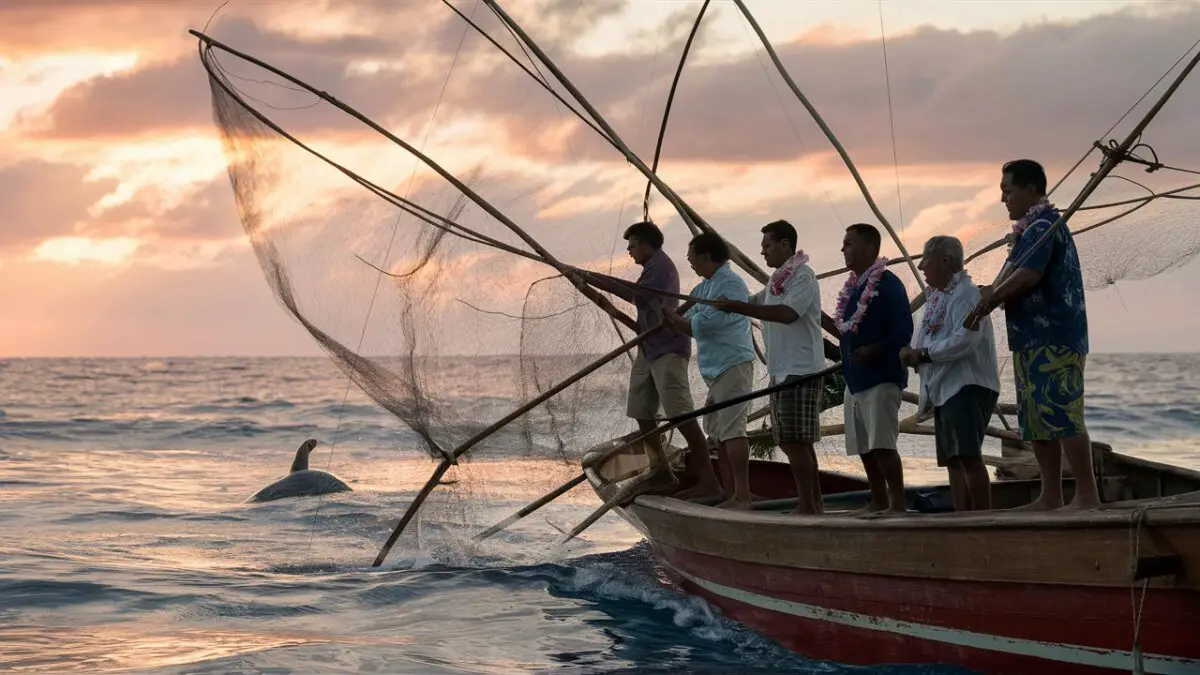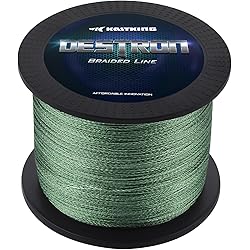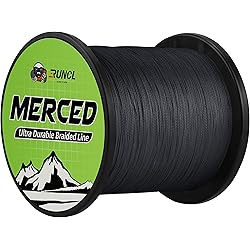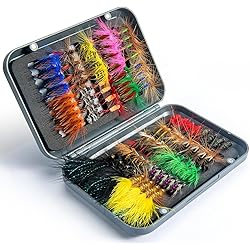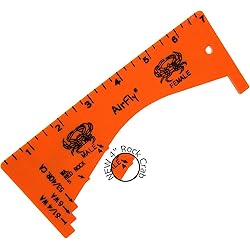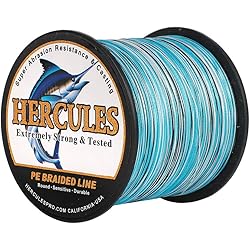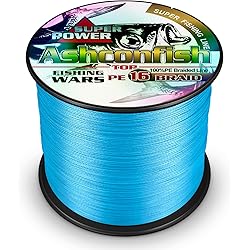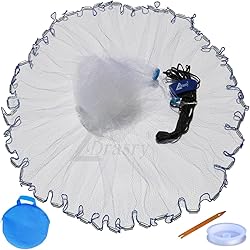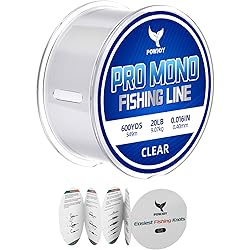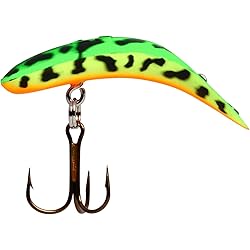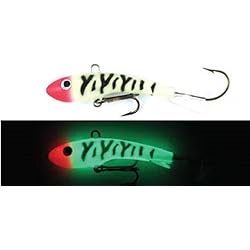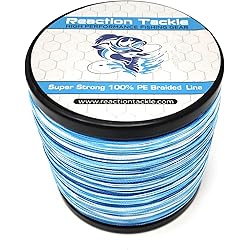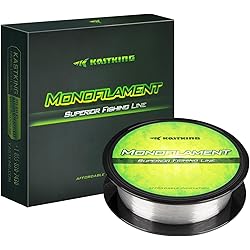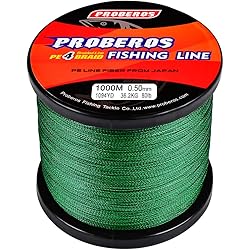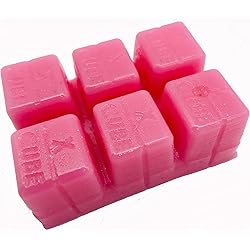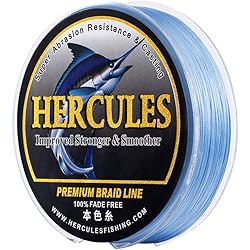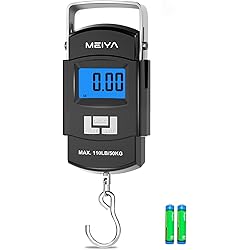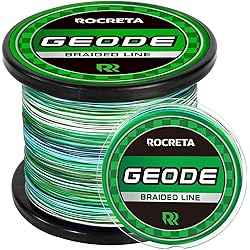An explanation of Hawaii’s fishing tradition. For Hawaii’s fishing enthusiasts, swaying palm trees and the steady crash of waves on the coast provide a soothing atmosphere.
For those looking for peace and adventure, the islands, encircled by the expanse of the Pacific, provide an experience that is unmatched.
A plethora of marine life lies under the turquoise surface, adding to Hawaii’s status as a top fishing destination.
The relationship between fishing and the islands is more than simply a recreational activity; it’s a cultural fabric laced with strands of custom.
Hawaii’s abundant seas are home to a wide variety of fish species, ranging from the colorful parrotfish to the imposing marlin.
Both locals and tourists enjoy the sport of fishing, which allows them to fully experience the rich maritime environment.
Anglers threw in their hooks from the coast or set off on escorted trips, each telling a different tale of hope and success.
The ancient Hawaiians, with their profound respect for nature, passed down sacred fishing rituals that continue to shape the island’s identity.
As the sun dips below the horizon, casting hues of orange and pink across the sky, the connection between Hawaii and fishing deepens.
It’s not just about the catch; it’s about the moments shared, the stories told, and the perpetuation of a timeless bond between the islands and the shimmering seas that cradle them.

Hawaii’s Fishing History
Native Hawaiians used customary fishing techniques that were a reflection of their close relationship to the water hundreds of years ago.
These practices changed throughout time, combining with more contemporary approaches to produce a distinctive fishing culture that is unmatched worldwide.
The long-standing custom of sustainable harvesting encouraged a profound regard for the fragile equilibrium of marine ecosystems, guaranteeing that the ocean’s abundance was not only utilized but also valued.
They were able to sail the enormous waters of the Pacific with elegance and accuracy because of the use of outrigger canoes and handwoven nets, which demonstrated their maritime heritage’s creativity and inventiveness.
Over time, the integration of artisanal fishing and sustainable aquaculture has added to the richness of this marine fabric.
Contemporary conservation endeavors have included conventional knowledge, endorsing methods that preserve aquatic biodiversity while upholding the means of subsistence for coastal populations.
The concept of ahi limu, which emphasizes the sustainable gathering of tuna and seaweed, represents the Hawaiian people’s harmonious coexistence with their maritime environment.
Hawaiians continue to use cutting-edge technologies to monitor and protect their maritime heritage, drawing inspiration from their cultural legacy in the face of contemporary issues like overfishing and climate change.
In addition to preserving a thriving fishing culture, this dynamic mix of antiquated customs and contemporary methods offers promise for worldwide attempts to strike a balance between environmental care and human needs.

The Hawaiian Seas are home to a variety of marine life.
Tucked away within the Pacific Ocean, Hawaii’s pristine seas are a marine enthusiast’s paradise.
The colorful coral reefs are home to an incredible array of marine life, from the smallest reef fish to the largest pelagic species, all of which display a kaleidoscope of hues.
Anglers can expect an unmatched experience and a wide range of prizes and difficulties on fishing expeditions in these unspoiled waters.
The angler joins the complex dance between human ability and the erratic motions of the ocean’s organisms when they cast their line.
The water’s glistening cleanliness adds to the excitement of hunting by allowing fishermen to see the fish’s graceful motions below the surface.
Because of the islands’ advantageous location at a crossroads for migrating species, every fishing trip promises to be an exciting adventure filled with the wonders of nature.
Every catch made in Hawaii’s seas, whether pursuing the elusive marlin or battling playfully with the acrobatic mahi-mahi, has a distinct backstory.
Anglers leave the archipelago with a profound appreciation for the linked beauty of the maritime world, in addition to a plentiful harvest of fish, thanks to the complex tapestry of marine life woven into the aquatic ecology.
More than a sport, fishing in Hawaii is a colorful story about the sea’s riches waiting to be found.
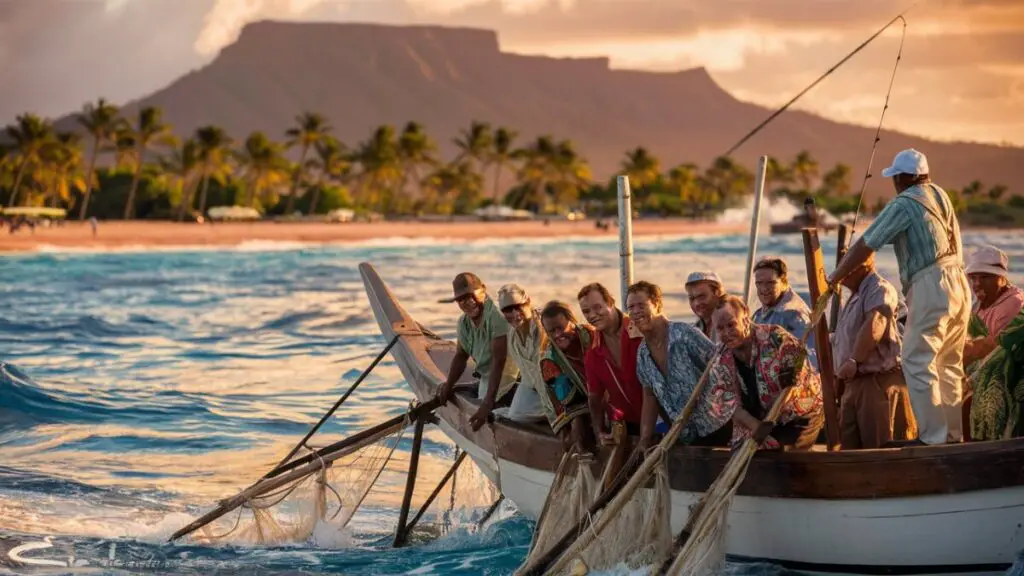
Fishing’s Cultural Significance in Hawaii
In Hawaii, fishing is more than just a recreational activity—it’s a deeply ingrained cultural tradition.
A number of festivals and events held throughout the year highlight the importance of the ocean in the lives of the islanders, creating a link between customs from the past and modern ways of living.
The annual Ahi Festival, when villagers come together to appreciate the beautiful tuna that has nourished villages for centuries, is one of the major events that best illustrates this link.
This vibrant event guarantees the transmission of the wisdom of sustainable fishing over the years by providing a forum for the exchange of nautical anecdotes and methods.
Another essential component of these celebrations are the traditional canoe races, which emphasize the skillful blending of historical and contemporary nautical knowledge and demonstrate the knowledge needed to traverse the island waterways.
Additionally, the enticing scent of freshly prepared seafood and the throbbing beats of Hawaiian music create an ambiance that embodies the spirit of Hawaiian fishing culture for attendees.
It’s more than just a festival; it’s a live example of the Hawaiian people’s long-lasting bond with the huge, abundant Pacific Ocean, which continues to influence their culture and identity.
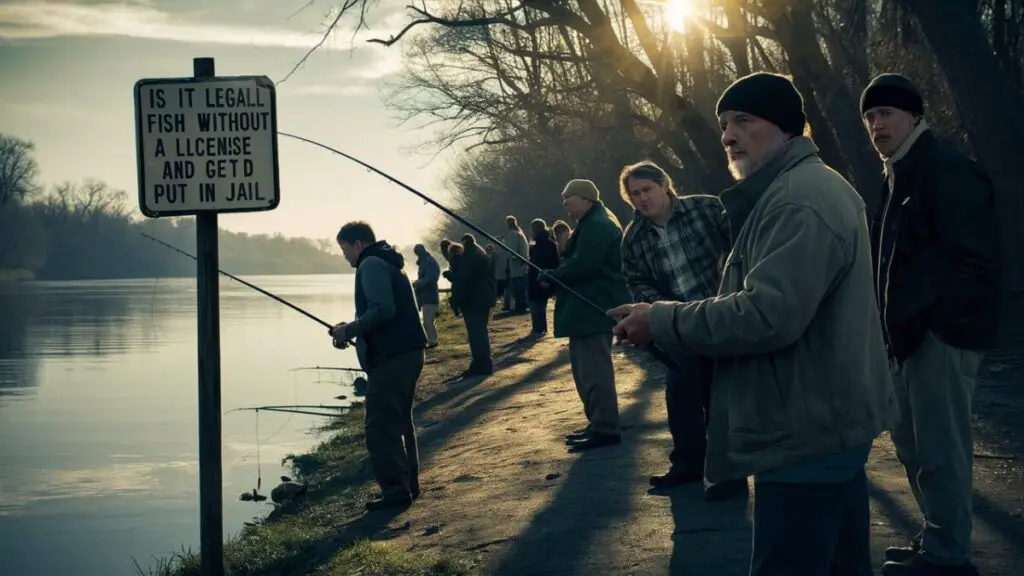
Popular Fishing Spots in Hawaii
There are several well-known fishing locations in Hawaii for those who are itching to throw in their line.
Every area, from the bustling Waikiki Beach to the deep-sea depths off Maui, offers fishing enthusiasts a different kind of fishing experience.
Anglers looking for the excitement of a successful catch will find paradise in the pristine seas surrounding the islands, which are teeming with a rich array of marine life.
Hawaii is well known for its sport fishing, where anglers may capture highly sought-after species including blue marlin, yellowfin tuna, and the elusive Mahi-Mahi.
In addition to the heart-pounding activity, fishing in Hawaii has cultural significance that enhances the experience.
Many residents practice the ancient Hawaiian method of fishing, passing on a sense of history to those who are willing to learn.
Hawaii is a fishing paradise for all skill levels, with its fishing environment effortlessly fusing natural beauty, cultural traditions, and the thrill of the hunt, whether you’re drawn to the peace and quiet of freshwater ponds or the adrenaline of deep-sea charters.
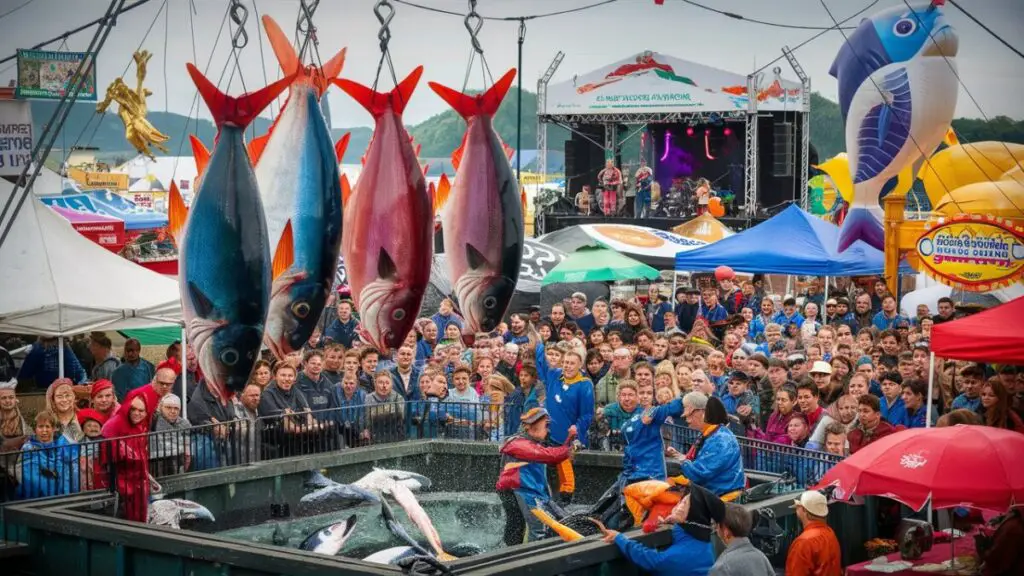
Types of Fishing in Hawaii
Hawaii’s colorful fishing tapestry features opposing worlds represented by shore fishing and deep-sea fishing.
On the glistening beaches, anglers dance with the waves, extending their lines beyond the horizon in search of hidden gems below the surface.
The tides determine the art of shore fishing, and knowing the rhythm of the shoreline is just as important as selecting the right bait.
The diligent fisherman will find a variety of marine life under the surface, ranging from the energetic yellowfin tuna to the stately Mahi-Mahi.
Deep-sea fishing, on the other hand, presents a completely different scene as fishermen embark on a nautical journey into the vast ocean.
Hiring a boat becomes a way to enter the ocean, where the hunt for bigger, more dangerous animals begins.
An exciting adventure was in store thanks to the exhilaration of taking on massive marlins and the suspense of a deep-sea tug-of-war, an exciting adventure was in store.
Equipped with specialist equipment and a deep understanding of the secrets of the ocean, deep-sea fishers penetrate the depths.
However, both approaches unify the quest for the unknown, the thrill of feeling the line tighten with the possibility of a catch, and the deep relationship between man and the endless sea.
Fishing in Hawaii is more than just a hobby—whether from the beautiful beaches or the infinite depths—it’s an enthralling voyage into the heart of the Pacific’s underwater treasures.

The difficulties Hawaiian fishermen face
Notwithstanding the attraction of Hawaii’s seas, overfishing and climate change present problems for fishermen.
Marine conservation initiatives are critical to the marine ecosystem’s fragile balance.
Hawaiian fishermen’s customs are in jeopardy due to the increasing frequency of catastrophic weather events linked to climate change.
Rising sea temperatures can disrupt the distribution and migratory patterns of fish species, thereby affecting the quantity and accessibility of marine resources.
The overfishing problem adds to these environmental worries and makes conservation efforts even more important.
The demand for seafood has increased dramatically over time, which has caused certain fish populations to decline.
Initiatives to guarantee the long-term health of Hawaii’s marine environment must include the creation of marine protected zones (MPAs) and sustainable fishing methods.
Fish populations can rebound in these MPAs, which serve as sanctuaries for marine species and enhance the ecosystem’s overall resilience.
Effective conservation initiatives require cooperation between local governments, environmental organizations, and communities.
Hawaii can ensure a healthy coexistence between humans and the ocean and protect its marine riches for future generations by taking proactive measures to address the issues of climate change and overfishing.
SwellPRO, SwellPro Fisherman Drone
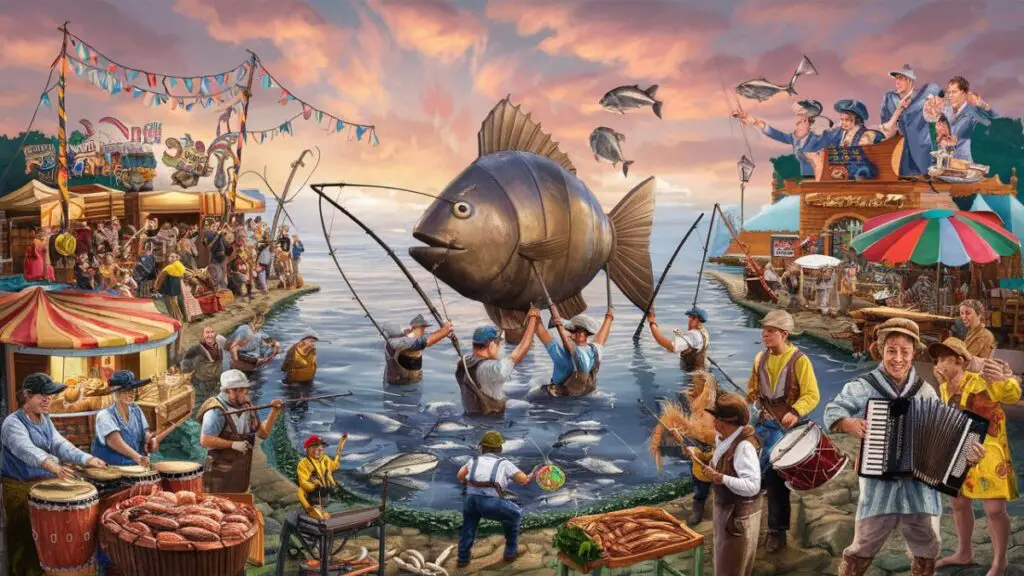
Hawaii’s Sustainable Fishing Methods
In response to these issues, Hawaii promotes sustainable fishing methods.
Initiatives to promote ethical fishing practices and educate the public exemplify the dedication to safeguarding the fragile biodiversity of the ocean.
Hawaii has adopted a comprehensive approach to marine conservation through strategic programs, highlighting the significance of protecting not just the targeted fish species but also the ecosystem as a whole.
Local communities are important partners in this project; they actively engage in ecotourism promotion activities that emphasize the inextricable connection between a healthy ocean environment and the state’s cultural identity.
Hawaii has imposed strict laws, including no-take zones, to guarantee the effectiveness of these conservation efforts and give marine ecosystems a chance to recover.
In order to efficiently monitor and control fishing operations, the state has invested in state-of-the-art technologies, including satellite surveillance, in cooperation with scientists and environmentalists.
This proactive approach preserves the delicate balance required to support healthy fish populations in addition to protecting the livelihoods of nearby fishermen.
Hawaii also actively participates in international discussions to promote international collaboration in the fight against illicit, unreported, and unregulated (IUU) fishing, demonstrating that its devotion to this cause knows no national boundaries.
Hawaii hopes to set an example for sustainable fisheries management and encourage other coastal states to follow suit, thereby ensuring that people and the ocean coexist peacefully for future generations.
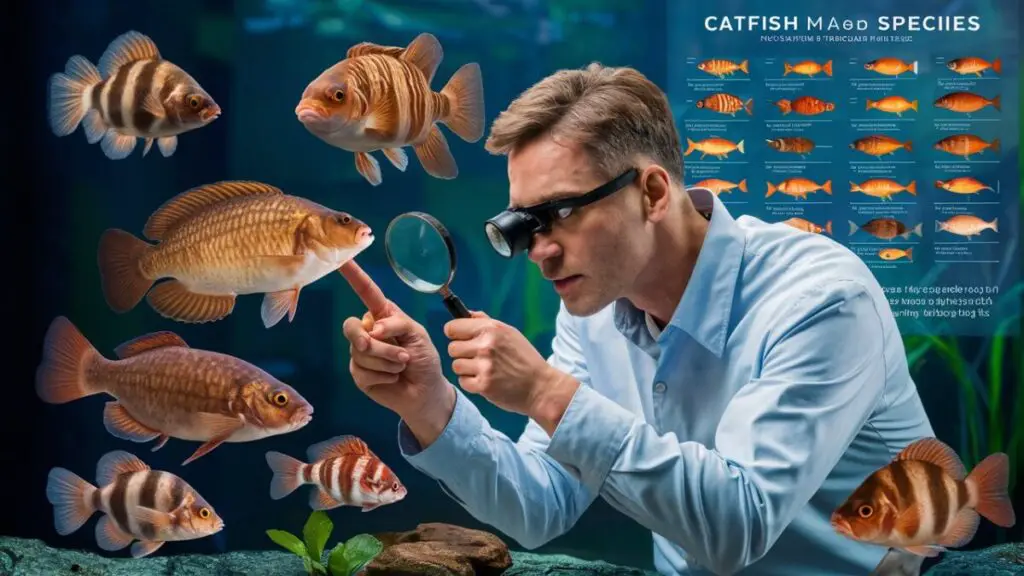
Stories of Local Fishermen
Every catch has a backstory, and Hawaiian fishermen’s stories are an integral part of their everyday existence.
These accounts offer an insight into the essence of Hawaiian fishing, ranging from close encounters with rare species to the friendships formed on the boats.
Only these seasoned fishermen will be able to uncover the mysteries hidden beneath the shimmering waves of the Pacific.
A popular story centers on the captivating dance of the slippery aku, a highly sought-after fish that demands patience and ability.
As the sun sets, dividing the wide ocean into shades of orange and pink, the fishermen engage in a delicate pursuit that demands intuition and accuracy.
Tales of old Hawaiian fishing methods that have been passed down through the years emerge in the embrace of the open sea, fusing tradition with the needs of the contemporary world.
The wave’s rhythmic tug connects the past and present by reflecting the ebb and flow of these stories.
The salty air is filled with legends of enigmatic marine life and the islanders’ fortitude in the face of nature’s capricious nature.
Furthermore, the camaraderie of the fishing boats, where friendships form under shared hardships and victories, is a monument to the spirit of aloha.
Stories of great fights with enormous marlins and solitary times of contemplation while traveling the wide waters etch themselves into the collective memories of Hawaiian fishermen.
These stories reveal the spirit of a society that is closely entwined with the abundant sea that surrounds them, in addition to celebrating the art of fishing.
An explanation of Hawaii’s fishing tradition

SwellPRO, SwellPro Fisherman Drone
Hawaii Fishing Gear and Equipment
The previously straightforward and efficient traditional Hawaiian fishing gear has changed along with technology.
It’s vital to comprehend the necessary gear and instruments for a productive fishing trip in Hawaii.
Modern innovations like GPS navigation devices and sonar technologies have greatly improved Hawaiian fishermen’s productivity.
Locally referred to as “amaama,” the age-old practice of throw-net fishing still continues, although it now coexists alongside more modern techniques like rod and reel fishing.
By utilizing advanced sonar equipment, fishermen can more precisely find schools of fish, maximizing their catch.
GPS navigation devices make it easier for fishermen to navigate the wide Pacific oceans and discover a variety of fishing spots while making an expedient return to land.
Despite technological advancements, society still holds a deep respect for customs.
Many fishermen continue to use handmade tools passed down through the generations, connecting the past and present.
Sustainable fishing methods based on Hawaiian cultural values are becoming more popular.
The primary goals of conservation efforts are to protect the fragile marine ecology and sustain fish populations for future generations.
In this dynamic setting, the utilization of contemporary technologies and traditional wisdom ensures a delicate balance between advancement and preservation of Hawaiian fishing traditions.

Hawaiian Fishing Tourism Trends
Unquestionably, the growth of fishing tourism in Hawaii has significantly boosted the local economy.
Fishing cruises, tailored to the needs of both novice and experienced fishermen, are a major component of the island’s tourism economy.
These trips become a special fusion of adventure and leisure due to the attractiveness of the glistening Pacific seas, which are filled with a rich array of marine life.
Expert guides offer practical instruction to novice anglers, guaranteeing a pleasurable and prosperous fishing expedition.
In the meantime, experienced fishermen enjoy the challenge of capturing valuable game fish in the deep waters around the islands, such as marlin and tuna.
The positive effects on the local economy don’t stop with the tours; specialty shops, waterfront lodging, and mouthwatering seafood experiences all contribute to the growth of the fishing tourist sector, which in turn supports a lively and sustainable ecology.

Special Fishing Customs in Hawaii
Hawaii fishing is more than just a physical activity—it’s a profound spiritual journey.
The intricate web of rites and rituals woven with the rhythm of the ocean, along with the skill of fishing, form the core of this ancient custom.
These customs create an unbreakable thread that binds the fishing community in a way that transcends its borders.
Casting a line transforms into a spiritual dance that echoes the island’s dynamic cultural pulse and is a rhythmic interaction between man and the water.
AQUAGLIDE Chelan Inflatable Kayak
In Hawaii, every fishing trip is an opportunity to partake in the holistic embrace of nature, where the salty air, the dance of waves, and the whisper of the wind harmonize with one’s inner self.
As the fishing rod becomes a conduit between realms, it symbolizes the interconnectedness of humanity and the ocean.
Through these spiritual undertakings, the people of Hawaii honor their heritage, fostering a timeless connection that transcends the boundaries of time and space.

Hawaii’s economy and fishing industry
Beyond its cultural significance, fishing is a vital economic sector for the Hawaiian archipelago.
Numerous islanders rely on this very traditional sector for their livelihoods, in addition to helping to preserve the islands’ cultural fabric.
The fishing industry creates a wide range of jobs, from commercial fishing and aquaculture to tourism-related jobs like boat chartering.
The jobs it creates locally and the food it provides for the people demonstrate the vital role that fishing plays in Hawaii’s economy.
Furthermore, the business attracts tourists who want to see traditional Hawaiian fishing methods, which benefits the travel and tourism sectors.
Sustainable fishing methods are becoming more and more crucial as Hawaii tries to strike a balance between environmental preservation and economic growth, guaranteeing that this essential sector will continue to be a driving force behind the islands’ economy.
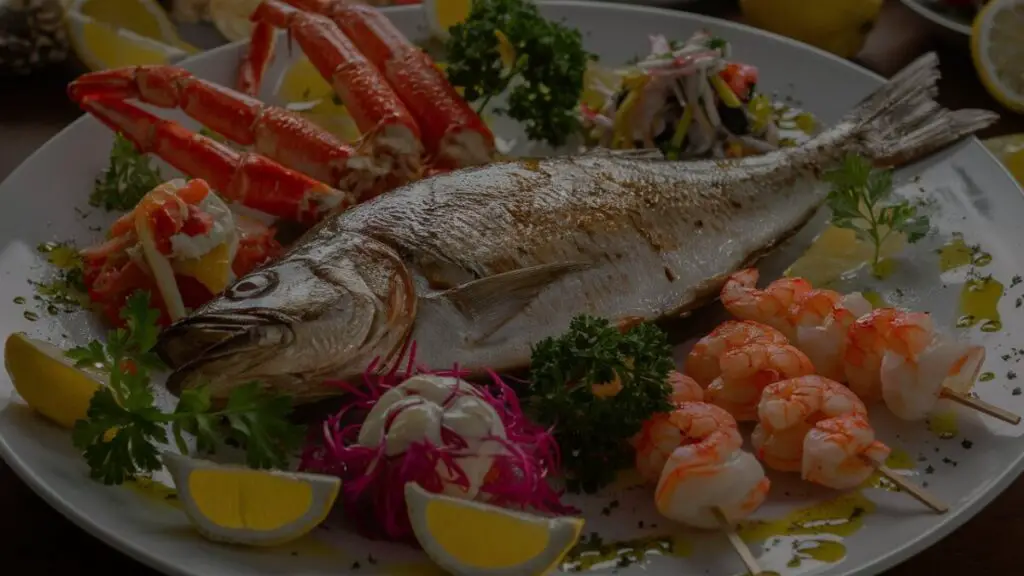
Well-Known Fish Recipes in Hawaii
A profusion of delicious fish dishes captures the essence of the islands’ colorful culinary environment, while the abundance of Hawaii’s crystal-clear seas, teaming with diverse marine life, makes its way to the dining table with ease.
Every mouthful is a celebration of the bounty of the ocean, from the well-known poke bowls with their delicious cubes of skillfully seasoned fresh ahi tuna or marlin to the sizzling joys of grilled specialties with mahi-mahi or ono.
The Hawaiian culinary scene, a symphony of tastes that dance on the palate, is a living witness to the islanders’ deep relationship to their aquatic riches.
Deeply ingrained in their cultural background, the local chefs demonstrate their skill at turning seafood into dishes that embrace innovation while still paying homage to tradition.
AQUAGLIDE Chelan Inflatable Kayak
As each dish tells a story of the sea, dining in Hawaii becomes a sensory journey where the spirit of the islands is savored in every delicious bite.

Hawaii’s fishing future
Hawaii is at a critical point in terms of protecting its unique marine habitat due to increasing sea levels and the worsening effects of climate change.
Both natural and human-caused causes are increasingly endangering the delicate equilibrium of the seas, which is critical for the fishing industry’s health.
Sustainable management plans must prioritize the long-term health of marine resources as communities grapple with overfishing and habitat deterioration.
Implementing and enforcing strong conservation measures requires cooperation amongst stakeholders, including local communities, government agencies, and environmental groups.
Hawaii can safeguard a responsible and accountable approach to resource consumption while also protecting its unique aquatic species by integrating cutting-edge technologies into the tracking and monitoring of fishing operations.
By promoting ethical fishing techniques and ecotourism, the state can conserve its unique maritime biodiversity and instill in future generations a renewed sense of environmental care.
Hawaii’s fishing history depends on people’s commitment to striking a balance between human needs and ecological preservation.

Conclusion
Hawaii’s strong fishing heritage coexists peacefully amid the tides that lap over the islands.
The modern challenges Hawaiian fishermen face reflect sustainability, a crucial component of traditional methods.
As stewards of ancient customs, the islanders cast their nets not just for food but also as a holy rite, a communion with the sea that goes beyond simple harvesting.
Under the blue surface, a kaleidoscope of marine life becomes a living monument to the delicate balance preserved over generations.
These fishing excursions are imbued with Aloha, the spiritual essence of Hawaii, which cultivates a strong bond with the natural world and cultural legacy.
Under the fishing vessels’ hulls, the islands’ biodiversity is revealed, a complex tapestry woven with the tales of individuals who travel these seas.
In the face of modernization, the islanders work hard to protect the marine habitats that shape their identity, as well as traditional fishing customs.
As a provider and teacher, the ocean continues to be a timeless stage on which the dance of tradition and adaptation takes place, guaranteeing the resilient and revered continuation of Hawaii’s fishing culture.
FAQs
Is fishing a popular activity for tourists in Hawaii?
Fishing tours cater to tourists, providing an exciting blend of adventure and relaxation.
What types of fish are commonly caught in Hawaiian waters?
Hawaiian waters host a variety of fish, including mahi-mahi, tuna, and the iconic Hawaiian Wahoo.
How can one participate in traditional Hawaiian fishing ceremonies?
Some fishing tours offer cultural experiences, allowing participants to engage in traditional ceremonies.
Are there restrictions on fishing in Hawaii to protect the marine ecosystem?
Yes, Hawaii has regulations in place to ensure sustainable fishing practices and protect the marine environment.
Can I bring my own fishing gear to Hawaii, or is it better to rent?
Both options are viable. Some prefer the convenience of renting, while others bring their own gear for a more personalized experience.
Hooked on Tech: Exploring the latest Fishing Gadgets that Anglers swear by.
In the realm of angling, where tradition and technology often converge, a new wave of fishing gadgets has emerged, transforming the way anglers approach their craft.
From advanced fish finders to smart bait systems, these innovations have not only revolutionized the fishing experience but have also garnered a loyal following among anglers worldwide.
KastKing Destron Braided Fishing Line, Highly Abrasion Resistant, Improved Knot Strength, Ultra-Thin Diameter Superline, Zero Stretch & Memory, CFT “Color Fast Technology”, 75% Thinner Than Mono
$7.99 (as of November 9, 2025 02:50 GMT +00:00 – More infoProduct prices and availability are accurate as of the date/time indicated and are subject to change. Any price and availability information displayed on [relevant Amazon Site(s), as applicable] at the time of purchase will apply to the purchase of this product.)RUNCL Braided Fishing Line Merced, 1000 500 300 Yards Braided Line 4 8 Strands, 6-200LB – Proprietary Weaving Tech, Thin-Coating Tech, Stronger Smoother for Freshwater Saltwater
Now retrieving the price.
(as of November 9, 2025 02:50 GMT +00:00 – More infoProduct prices and availability are accurate as of the date/time indicated and are subject to change. Any price and availability information displayed on [relevant Amazon Site(s), as applicable] at the time of purchase will apply to the purchase of this product.)Dr.meter Fish Scale Luggage Scale Fishing Gear – 110lb Backlit LCD Display Digital Scale with Built-in Measuring Tape – Fishing Scale with 2 AAA Batteries, Pocket Size – Fishing Gifts for Men
$7.99 (as of November 9, 2025 02:54 GMT +00:00 – More infoProduct prices and availability are accurate as of the date/time indicated and are subject to change. Any price and availability information displayed on [relevant Amazon Site(s), as applicable] at the time of purchase will apply to the purchase of this product.)KastKing Fish Scale, WideView Floating Waterproof Digital Scale, 2.5” Large LCD Display, 110lb Capacity, Multi-Mode Pound/Ounces & Kilograms, Stores up to 9 Weights, Fishing Gifts for Men
$26.99 (as of November 9, 2025 01:24 GMT +00:00 – More infoProduct prices and availability are accurate as of the date/time indicated and are subject to change. Any price and availability information displayed on [relevant Amazon Site(s), as applicable] at the time of purchase will apply to the purchase of this product.)80 pcs YDIUDL 3rd Gen Fly Fishing Flies Kit – Hand-Tied Dry Flies for Trout, Bass, Salmon, Panfish – Delicate Lifelike Shapes, Lures for Freshwater Fly Fishing in Rivers & Lakes
$9.97 (as of November 8, 2025 19:55 GMT +00:00 – More infoProduct prices and availability are accurate as of the date/time indicated and are subject to change. Any price and availability information displayed on [relevant Amazon Site(s), as applicable] at the time of purchase will apply to the purchase of this product.)AirFly Crab Gauge – Measure for Dungeness, Rock Crab, Blue Crab, Lobster. Designed in San Francicso, USA
$7.95 (as of November 8, 2025 09:15 GMT +00:00 – More infoProduct prices and availability are accurate as of the date/time indicated and are subject to change. Any price and availability information displayed on [relevant Amazon Site(s), as applicable] at the time of purchase will apply to the purchase of this product.)HERCULES Cost-Effective Super Cast 8 Strands Braided Fishing Line 10LB to 300LB Test for Salt-Water,109/328/547/1094 Yards(100M/300M/500M/1000M),Diam.#0.12MM-1.2MM,Hi-Grade Performance,Variety Colors
$24.99 (as of November 9, 2025 02:50 GMT +00:00 – More infoProduct prices and availability are accurate as of the date/time indicated and are subject to change. Any price and availability information displayed on [relevant Amazon Site(s), as applicable] at the time of purchase will apply to the purchase of this product.)Ashconfish Braided Fishing Line-16 Strands Hollow Core Braided Line 20LB-500LB, 109/328/547/1093/1640/2187Yards(100M/300M/500M/1000M/1500M/2000M), Abrasion Resistant Zero Stretch Multiple Colors
$27.28 (as of November 9, 2025 02:50 GMT +00:00 – More infoProduct prices and availability are accurate as of the date/time indicated and are subject to change. Any price and availability information displayed on [relevant Amazon Site(s), as applicable] at the time of purchase will apply to the purchase of this product.)Drasry Saltwater American Fishing Cast Net 3/8inch Mesh Size for Bait Shrimp Trap Fish Heavy Duty Sinkers Throw Net 3FT/4FT/5FT/6FT/7FT/8FT/9FT/10FT Radius
$27.99 (as of November 9, 2025 01:24 GMT +00:00 – More infoProduct prices and availability are accurate as of the date/time indicated and are subject to change. Any price and availability information displayed on [relevant Amazon Site(s), as applicable] at the time of purchase will apply to the purchase of this product.)POWJOY 20 30 80 lb Strong Yet Thin Mono Fishing Line Clear Green, No tangles, No Fading, Knots Card Gift, Premium monofilament Nylon String for Big bass Fish in Saltwater Freshwater, red Yellow Blue
$10.98 (as of November 8, 2025 19:55 GMT +00:00 – More infoProduct prices and availability are accurate as of the date/time indicated and are subject to change. Any price and availability information displayed on [relevant Amazon Site(s), as applicable] at the time of purchase will apply to the purchase of this product.)Yakima Bait Flatfish F-5 High Action Plug
$7.64 (as of November 8, 2025 19:55 GMT +00:00 – More infoProduct prices and availability are accurate as of the date/time indicated and are subject to change. Any price and availability information displayed on [relevant Amazon Site(s), as applicable] at the time of purchase will apply to the purchase of this product.)RUNCL Braided Fishing Line Merced, 1000 500 300 Yards Braided Line 4 8 Strands, 6-200LB – Proprietary Weaving Tech, Thin-Coating Tech, Stronger Smoother for Freshwater Saltwater
Now retrieving the price.
(as of November 9, 2025 02:50 GMT +00:00 – More infoProduct prices and availability are accurate as of the date/time indicated and are subject to change. Any price and availability information displayed on [relevant Amazon Site(s), as applicable] at the time of purchase will apply to the purchase of this product.)Moonshine Metallic Shiver Minnow
$9.19 (as of November 8, 2025 19:55 GMT +00:00 – More infoProduct prices and availability are accurate as of the date/time indicated and are subject to change. Any price and availability information displayed on [relevant Amazon Site(s), as applicable] at the time of purchase will apply to the purchase of this product.)Reaction Tackle Braided Fishing Line – Pro Grade Power Performance for Saltwater or Freshwater Fish – Colored Fishing Line Braid for Extra Visibility
$17.98 (as of November 9, 2025 02:54 GMT +00:00 – More infoProduct prices and availability are accurate as of the date/time indicated and are subject to change. Any price and availability information displayed on [relevant Amazon Site(s), as applicable] at the time of purchase will apply to the purchase of this product.)KastKing World’s Premium Monofilament Fishing Line – Paralleled Roll Track – Strong and Abrasion Resistant Mono Line – Superior Nylon Material Fishing Line – 2015 ICAST Award Winning Manufacturer
$9.99 (as of November 9, 2025 02:50 GMT +00:00 – More infoProduct prices and availability are accurate as of the date/time indicated and are subject to change. Any price and availability information displayed on [relevant Amazon Site(s), as applicable] at the time of purchase will apply to the purchase of this product.)BAIKALBASS Braided Fishing Line 4 Strands Stronger Multifilament PE Braid Wire for Saltwater 6LB-100LB 110yards 328yards 547yards Super Strong Superline
$9.99 (as of November 9, 2025 02:50 GMT +00:00 – More infoProduct prices and availability are accurate as of the date/time indicated and are subject to change. Any price and availability information displayed on [relevant Amazon Site(s), as applicable] at the time of purchase will apply to the purchase of this product.)Fusion X Fishing – Xcube Soft Plastic Plastisol Fishing Lure Making Cubes – Single Pack 2.8 fl oz – 225 Colors – Make Your own Soft Plastic Rubber Fishing Lures.
Now retrieving the price.
(as of November 8, 2025 19:55 GMT +00:00 – More infoProduct prices and availability are accurate as of the date/time indicated and are subject to change. Any price and availability information displayed on [relevant Amazon Site(s), as applicable] at the time of purchase will apply to the purchase of this product.)
